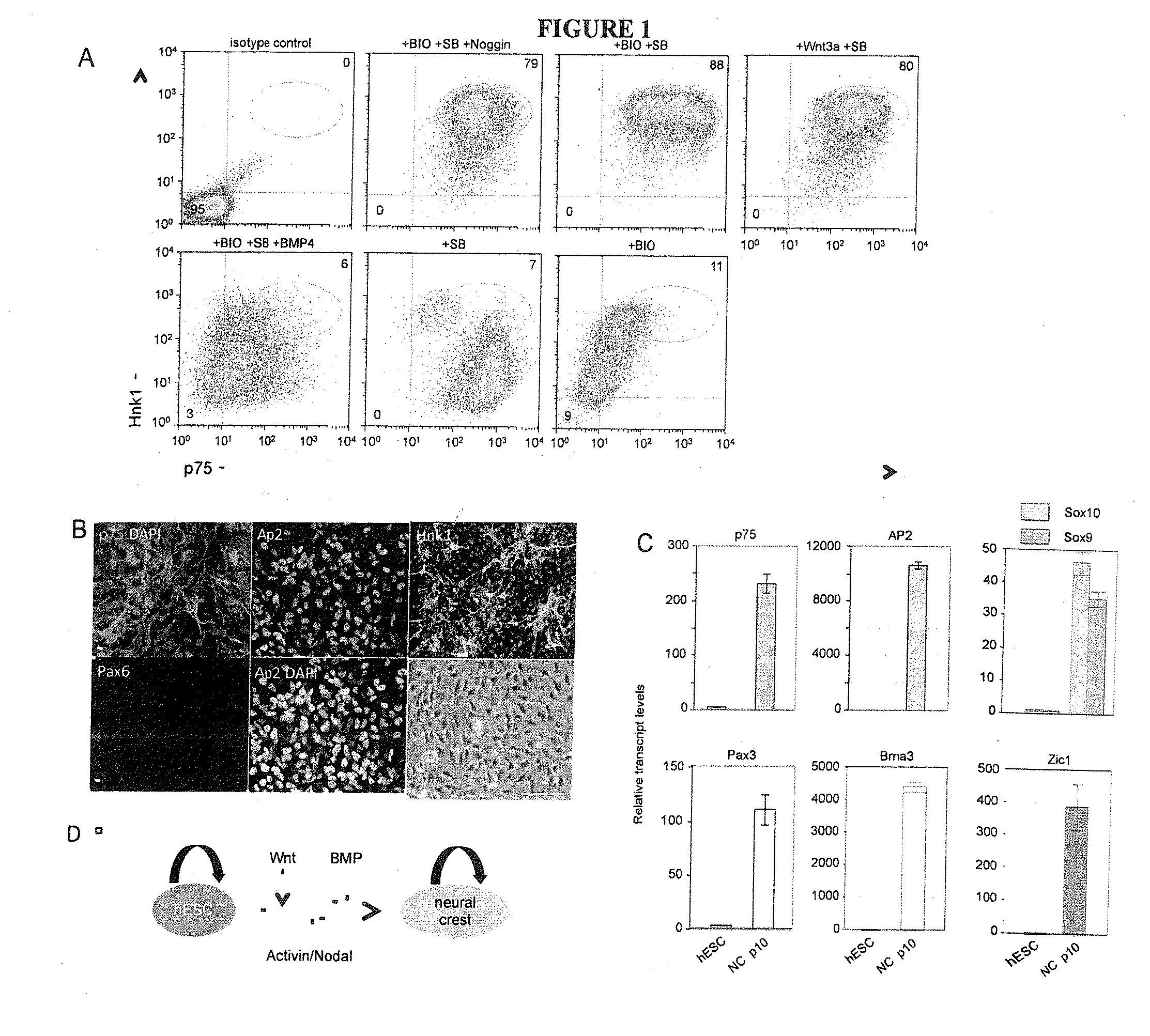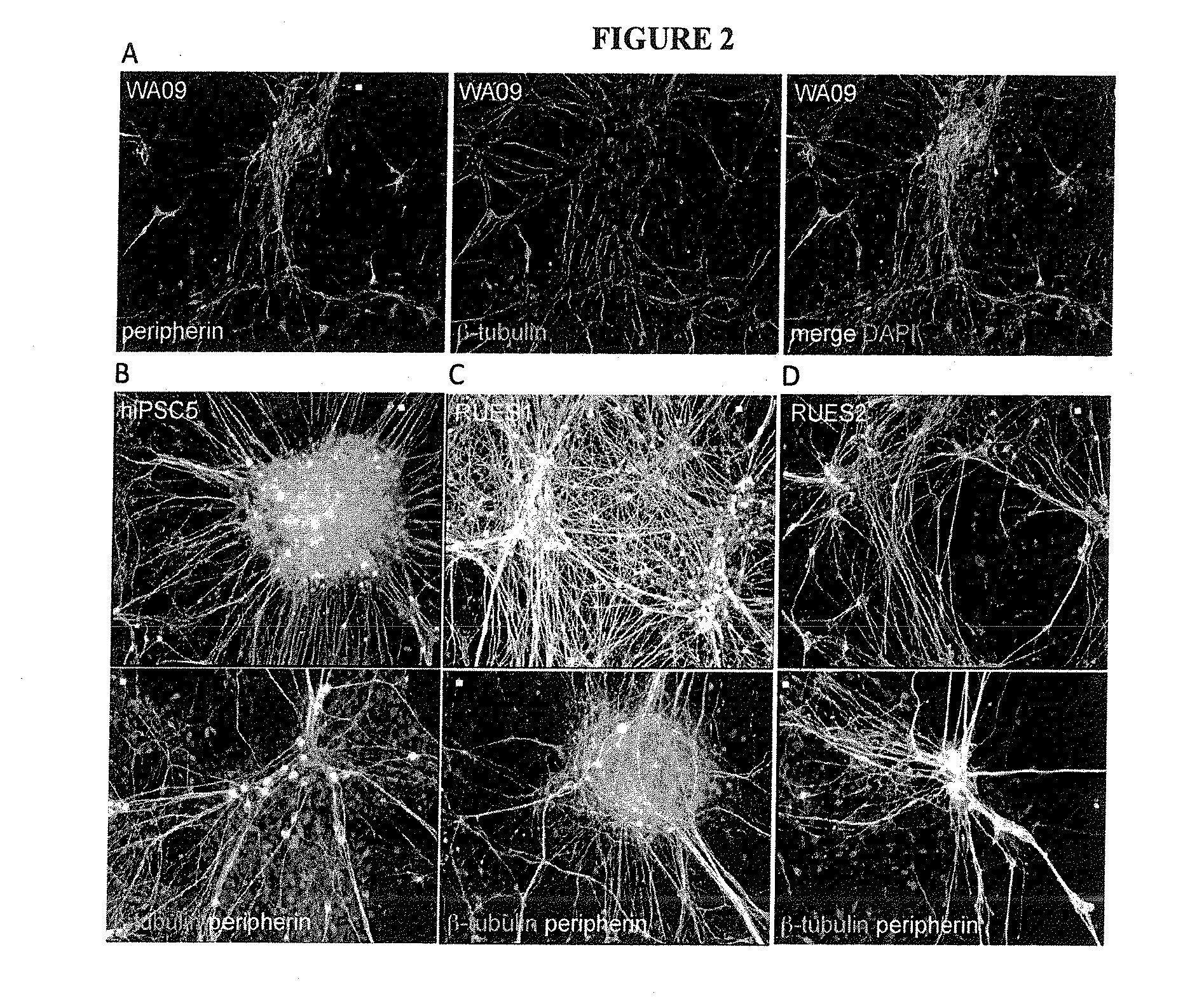Differentiation of human pluripotent stem cells to multipotent neural crest cells
a technology of neural crest cells and stem cells, applied in the field of differentiation of human pluripotent cells, can solve the problems of limiting the utility of tissue engineering, regenerative medicine and drug screening applications, complex multi-step procedures, and relatively low yields of p75, and achieve the effect of enhancing their potential utility
- Summary
- Abstract
- Description
- Claims
- Application Information
AI Technical Summary
Benefits of technology
Problems solved by technology
Method used
Image
Examples
examples
Materials and Methods
Stem Cell Culture.
[0080]WA09 (WiCell), RUES1, RUES2 (Dr. A. Brivanlou, Rockefeller University) hESCs and the hiPSC lines Fib2-iPS4 and Fib2-iPS5 (Dr. George Daley, Children's Hospital Boston) were cultured on Geltrex (Invitrogen)-coated plates in chemically defined media containing Heregulin β (10 ng / ml), Activin A (10 ng / ml), LR-Igf (200 ng / ml) and Fgf2 (8 ng / ml) as described previously (25).
Neuroprogenitor Cell, Neural Crest and Mesenchymal Cell Differentiation.
[0081]NPC differentiation was performed as described (18). Briefly, cells were plated on Geltrex-coated plates in defined media without Activin A, supplemented with 20 μM SB 431542 (Tocris) and 500 ng / ml Noggin (R&D systems) for 11 days with or without 2 μM of (2′Z,3′E)-6-Bromoindirubin-3′-oxime (BIO) (GSK3 Inhibitor IX, Calbiochem), or 15 ng / ml Dickkopf (R&D Systems). For direct neural crest differentiation, cells were plated at a density of 1×105 cells / cm2 in defined media lacking Activin A, supplemen...
PUM
| Property | Measurement | Unit |
|---|---|---|
| time | aaaaa | aaaaa |
| time | aaaaa | aaaaa |
| time | aaaaa | aaaaa |
Abstract
Description
Claims
Application Information
 Login to View More
Login to View More - R&D
- Intellectual Property
- Life Sciences
- Materials
- Tech Scout
- Unparalleled Data Quality
- Higher Quality Content
- 60% Fewer Hallucinations
Browse by: Latest US Patents, China's latest patents, Technical Efficacy Thesaurus, Application Domain, Technology Topic, Popular Technical Reports.
© 2025 PatSnap. All rights reserved.Legal|Privacy policy|Modern Slavery Act Transparency Statement|Sitemap|About US| Contact US: help@patsnap.com



